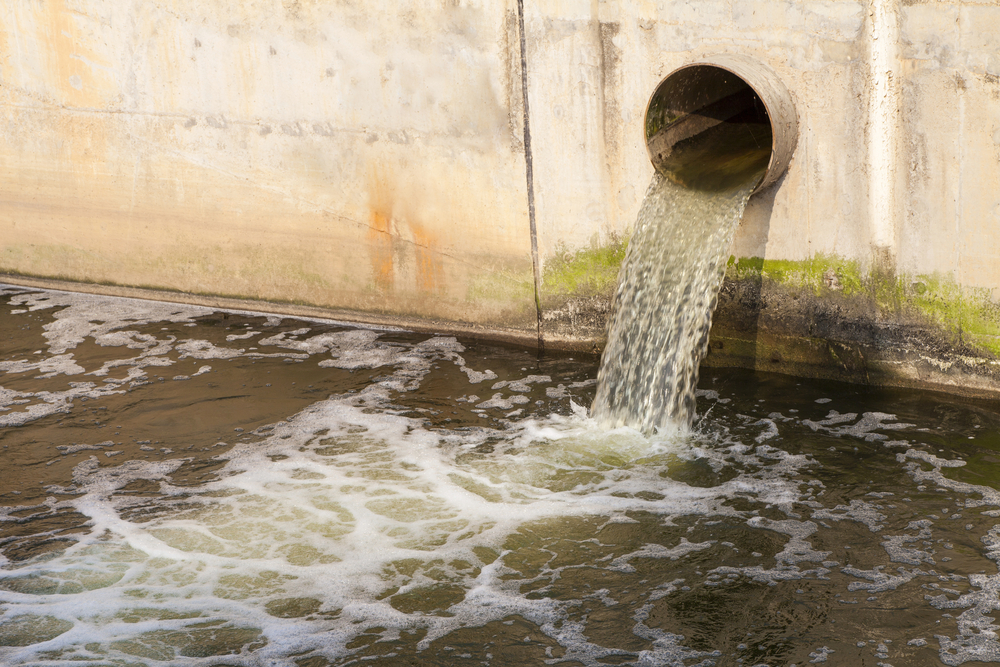Early Indicators of Environmental Hazards
The tale of environmental degradation at Camp Lejeune began subtly, with signs that were easy to overlook amidst the daily bustle of military life. It was a confluence of small warnings that hinted at a larger crisis brewing beneath the surface.
- Unusual illnesses among base residents started to emerge, with patterns that could not be easily explained by common diagnoses.
- Reports of foul odors and discoloration in the water supply raised concerns, yet were initially dismissed as isolated incidents.
- Wildlife and domestic animals exhibited strange behaviors and health issues, suggesting an environmental disturbance.
These early indicators, though not immediately alarming, were the harbingers of a toxic legacy that would unfold over the decades. They set the stage for a saga of discovery and denial, as the true extent of the contamination slowly came to light.
Military Operations and Toxic Legacy
The operations at Camp Lejeune Marine Corps Base were integral to the military might of the United States, yet they left an indelible mark on the environment. Over three decades, from 1953 to 1987, the base’s water supply systems became a source of peril rather than sustenance. Unbeknownst to the nearly 1 million people who relied on this water, a toxic cocktail of chemicals was seeping into their daily lives, setting the stage for a public health crisis of staggering proportions.
The legacy of these operations is a complex web of health issues and legal challenges. Among the contaminants found in the water were volatile organic compounds (VOCs), including known carcinogens such as trichloroethylene (TCE), perchloroethylene (PCE), benzene, and vinyl chloride. The impact of this contamination has been profound, with victims suffering from a range of health problems, including cancer, birth defects, and other chronic diseases. The fight for recognition and justice has been arduous, with legal options and compensation only becoming available after years of struggle and advocacy.
- Volatile organic compounds (VOCs) contamination
- Known carcinogens: TCE, PCE, benzene, vinyl chloride
- Health issues: cancer, birth defects, chronic diseases
- Legal challenges and compensation efforts
Public Awareness and Initial Investigations
As the veil of secrecy began to lift, the public’s attention was drawn to the unsettling conditions at Camp Lejeune. Reports emerged detailing the presence of hazardous chemicals in the base’s water supply, a situation that had persisted unnoticed for decades. The revelation of water contamination from 1953 to 1987 sparked widespread concern, as the potential implications for health became a pressing question.
Initial investigations into the water quality at Camp Lejeune uncovered a disturbing array of toxic substances. These findings prompted a deeper inquiry into the extent of the contamination and the possible health repercussions for those exposed. The community of veterans, families, and civilian employees who had lived or worked at the base during this period faced an uncertain future, as they began to connect past health issues with their time at Camp Lejeune.
The quest for answers led to a surge in legal activity, with affected individuals seeking compensation for their suffering. The Camp Lejeune Water Contamination Lawsuit became a focal point for many, offering a pathway to address the injustices they had endured. Legal assistance became available to guide victims through the complex process of filing claims, as they fought for recognition and justice.
The Human Toll: Health Impacts and Personal Stories
Victims of Toxic Exposure
The narrative of Camp Lejeune is deeply marred by the stories of those who suffered from the toxic exposure. Men, women, and children who lived or worked at the base have reported a range of debilitating conditions, many of which have been directly linked to the contaminated water supply. The victims’ ailments span from rare cancers to neurological disorders, painting a grim picture of the human cost of environmental negligence.
- Rare cancers
- Neurological disorders
- Other chronic conditions
Families recount their struggles with not only the physical and emotional toll of their illnesses but also the bureaucratic challenges they faced when seeking recognition and assistance. The fight for justice has been a long and arduous journey for many, with some finding solace in community support groups and others turning to legal avenues for compensation. Amidst their battles, survivors have become staunch advocates for environmental safety and stricter regulations to prevent future tragedies.
Long-Term Health Consequences
The long-term health consequences of the toxic exposure at Camp Lejeune have been profound and far-reaching. Individuals who lived or worked at the base have reported a range of chronic conditions, many of which have been directly linked to the contaminants in the water supply. These conditions include, but are not limited to:
- Various forms of cancer, such as leukemia, bladder cancer, and breast cancer
- Birth defects and developmental disabilities in children born to those exposed
- Neurological disorders
- Liver and kidney diseases
- Infertility and reproductive issues
The latency period of these illnesses means that for many, the diagnosis came years, if not decades, after exposure, complicating efforts to seek justice and compensation. The struggle has been exacerbated by the challenge of proving causation in court, as scientific research on the effects of exposure to specific contaminants is complex and ongoing.
Families have been left to cope with the emotional and financial burden of these long-term health issues, often without adequate support or recognition from the institutions responsible for their plight. The fight for recognition and justice continues, as does the need for comprehensive healthcare and compensation for the victims.
Families Fight for Recognition and Justice
The struggle for recognition and justice by the families affected by the contamination at Camp Lejeune has been a long and arduous journey. These families have faced numerous challenges, from the initial disbelief of their claims to the bureaucratic hurdles that have impeded their quest for acknowledgment and compensation.
- Persistence in Advocacy: Many families have become staunch advocates for environmental safety, tirelessly campaigning for the truth to be acknowledged by the military and government authorities.
- Legal Hurdles: The legal battles have been complex, with families often finding themselves entangled in a web of statutes and regulations that seem to work against them.
- Emotional and Financial Strain: The emotional toll on these families is immeasurable, compounded by the financial burden of medical expenses and the lack of support.
Despite these challenges, the determination of these families has led to some victories, including increased public awareness and steps toward policy changes. Their fight continues as they seek full recognition and just compensation for the suffering they have endured.
Scientific Evidence and Legal Battles
Research Linking Contamination to Diseases
The quest to understand the full impact of the contamination at Camp Lejeune has led to a series of significant research efforts. These studies have aimed to establish clear connections between the toxic substances present at the base and the diseases afflicting former residents and personnel.
- Epidemiological Studies: Large-scale epidemiological studies have been instrumental in correlating the incidence of certain diseases with exposure to the contaminated water supply at Camp Lejeune.
- Clinical Research: Clinical research has provided insights into the biological mechanisms by which the contaminants could cause harm, supporting the findings of the epidemiological work.
- Toxicological Analysis: Toxicological analysis has helped to identify the specific chemicals responsible for health issues, and their potential effects on human health.
The convergence of these research streams has been critical in building a body of evidence that has informed both public health responses and legal actions. The findings have not only shed light on the probable health outcomes for those exposed but have also fueled the ongoing pursuit of justice and policy reform.
Challenges in the Courtroom
The legal journey for those affected by the contamination at Camp Lejeune has been fraught with obstacles. The complexity of environmental litigation, coupled with the need to establish a direct link between exposure and illness, has made the path to justice arduous. Plaintiffs have faced a series of hurdles, including:
- Proving causation amidst scientific uncertainty
- Overcoming statutory limitations and immunities
- Navigating the intricate interplay of state and federal laws
Despite these challenges, the enactment of the Camp Lejeune Justice Act has opened a new avenue for redress. This legislation allows individuals, including Veterans, to file claims with the Department of the Navy. However, potential claimants must remain vigilant against fraudulent schemes, as the official online claims portal is yet to be launched.
Policy Changes and Compensation Efforts
Following the policy changes and compensation efforts, the focus shifted to addressing the environmental aftermath at Camp Lejeune. The cleanup process was multifaceted, involving several key steps:
- Identification of Contaminated Sites: Comprehensive surveys were conducted to map out the extent of contamination across the base.
- Removal of Hazardous Materials: Specialized teams were deployed to safely remove toxic substances from the affected areas.
- Water Treatment: Advanced water treatment systems were installed to purify the base’s water supply.
- Soil Remediation: Techniques such as bioremediation were used to restore the soil quality.
These efforts were complemented by ongoing monitoring to ensure the effectiveness of the cleanup and to prevent future contamination. The remediation strategies employed at Camp Lejeune serve as a case study for managing environmental health risks at military installations worldwide.
Environmental Aftermath and Cleanup Efforts
Assessing the Extent of Pollution
The comprehensive assessment of pollution at Camp Lejeune began with a series of environmental studies aimed at identifying the types and concentrations of contaminants present. These studies revealed a disturbing array of toxic substances, including volatile organic compounds (VOCs), benzene, and trichloroethylene (TCE), permeating the water supply.
Key steps in the assessment included:
- Collecting and analyzing water samples from various sources within the base.
- Reviewing historical records to determine the timeline of chemical usage and disposal.
- Conducting interviews with military personnel and civilian employees to uncover past practices.
The findings painted a grim picture of widespread environmental damage, with pollution levels exceeding safety standards set by federal and state agencies. The extent of the contamination raised serious concerns about the long-term ecological impact and the health implications for those exposed to the hazardous environment.
Remediation Strategies and Successes
The cleanup efforts at Camp Lejeune have been multifaceted, addressing the extensive pollution that has affected the area for decades. Key strategies implemented include:
- Groundwater treatment systems to remove volatile organic compounds (VOCs) from the water supply.
- Soil vapor extraction techniques to mitigate the risk of airborne contaminants.
- Excavation and removal of heavily contaminated soil and sediment.
These efforts have yielded significant successes, with numerous sites within Camp Lejeune having been remediated to meet federal and state standards. The progress is marked by the closure of several cleanup sites and the restoration of safe drinking water sources. However, the work is ongoing, and the commitment to environmental restoration continues to be a priority for the military and environmental agencies involved.
Ongoing Monitoring and Prevention Measures
In the wake of extensive remediation efforts at Camp Lejeune, ongoing monitoring and prevention measures have been established to ensure the safety of water sources and the health of the community. These measures include:
- Regular testing of water supply systems for contaminants.
- Continuous health surveillance of residents and personnel to track any emerging health issues.
- Implementation of stricter environmental regulations to prevent future contamination.
These steps are critical in maintaining vigilance against potential environmental threats and safeguarding public health. Moreover, the establishment of clear communication channels between military authorities, health agencies, and the affected community has been prioritized to foster transparency and trust. As the site moves forward, these ongoing efforts reflect a commitment to learning from past mistakes and proactively protecting the environment and human health.
Broader Implications: National and Global Perspectives
Comparative Analysis of Similar Incidents
The toxic legacy of Camp Lejeune is not an isolated incident. Across the globe, military and industrial activities have left indelible marks on the environment, often with dire health consequences for local populations. A comparative analysis reveals a pattern of negligence and long-term ecological damage:
- Mexico: Industrial pollution has led to severe water contamination, affecting the health of thousands.
- Ohio: Chemical spills have been linked to unusual environmental phenomena, raising concerns about air and water quality.
- Brazil: The presence of unexplained luminous objects in the sky has sparked debates about the potential risks of military testing.
These incidents, among others, underscore the need for stringent environmental oversight and proactive measures to prevent contamination. The stories of affected communities often share common themes of initial denial, protracted battles for recognition, and the arduous journey towards remediation and justice. As the world grapples with these challenges, the lessons learned from Camp Lejeune and similar sites are critical in shaping future environmental policies and ensuring public health.
Policy Implications for Military and Civilian Sites
The revelations of environmental contamination and its dire consequences at Camp Lejeune have underscored the urgent need for robust policy measures. Both military and civilian sites are now re-evaluating their environmental health and safety protocols to prevent similar tragedies.
Key policy implications include:
- Strengthening Environmental Oversight: Enhanced monitoring and regulation of hazardous substances on military bases and surrounding civilian areas are imperative to safeguard public health.
- Improving Transparency and Communication: Policies must ensure that potential environmental hazards are communicated promptly and transparently to all stakeholders, including service members, local communities, and environmental agencies.
- Establishing Clear Accountability: Clear lines of responsibility and accountability for environmental stewardship must be defined to facilitate prompt action and remediation efforts.
- Enhancing Health Surveillance: Military and civilian health systems should integrate comprehensive surveillance programs to detect and address health issues arising from environmental exposures early on.
- Fostering Interagency Collaboration: Collaboration between military and civilian agencies is crucial for sharing best practices, resources, and information to enhance environmental health and safety.
These policy changes are not just reactive measures but proactive steps towards a future where the health of service members and civilians is not compromised by the very environments meant to support and protect them.
Future Directions in Environmental Health and Safety
As the world grapples with the repercussions of environmental negligence, the path forward in environmental health and safety is becoming increasingly clear. Emphasis is shifting towards a proactive, rather than reactive, approach to environmental management. This includes the integration of advanced technologies for monitoring and prevention, as well as the development of comprehensive policies that prioritize public health and ecological integrity.
Key steps in this direction include:
- Implementing predictive analytics to identify potential environmental risks before they escalate.
- Strengthening international collaborations to share best practices and resources in environmental health.
- Investing in education and training to equip professionals with the skills needed to address future environmental challenges.
- Enhancing community engagement to ensure that public health priorities align with environmental policies.
The lessons learned from incidents like Camp Lejeune are informing a new era of environmental stewardship. With a concerted effort from governments, industry, and civil society, the goal is to forge a sustainable future where health risks associated with environmental contamination are significantly minimized.





